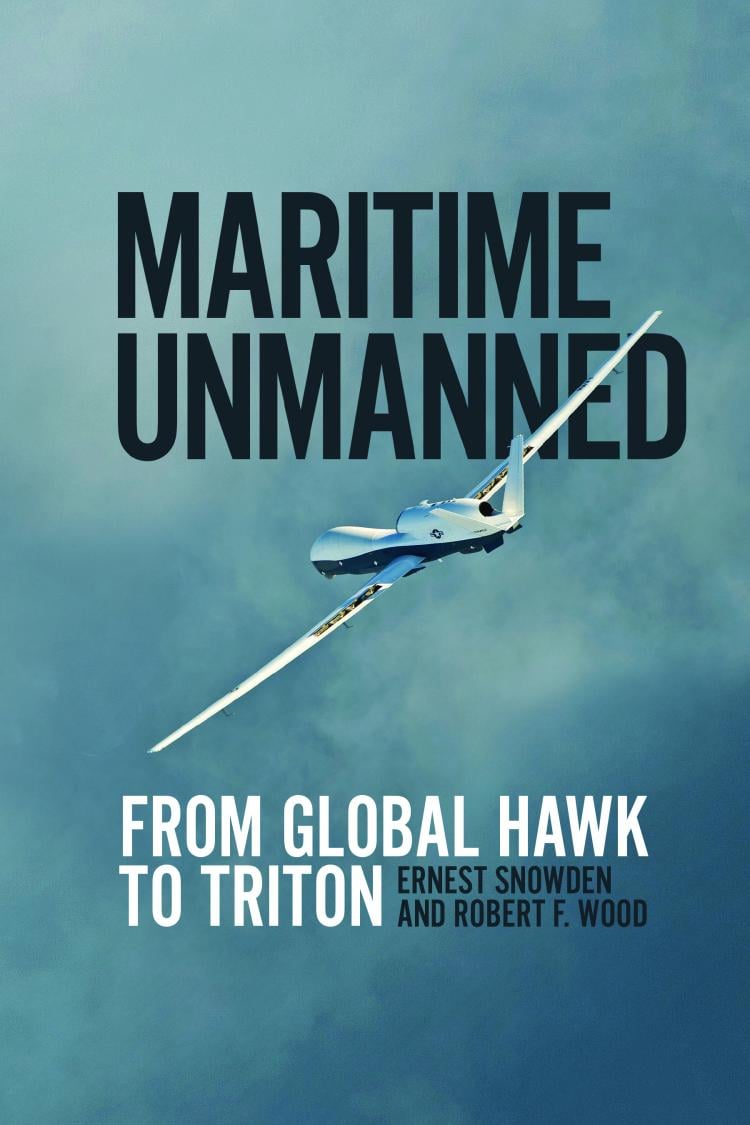Maritime Unmanned
- Subject: General Military & Naval History
- Format:
Hardcover
- Pages:
288pages
- Illustrations:
10 b/w photos, 2 tables, 1 figure
- Published:
November 15, 2021
- ISBN-10:
1682477002
- ISBN-13:
9781682477007
- Product Dimensions:
9 × 6 × 1 in
- Product Weight:
20 oz
Overview
Military Writers Society of America Award: Bronze Medal
Maritime Unmanned recounts the promising beginning, demoralizing setbacks, and ultimate success of the visionaries who championed unmanned aircraft systems (UAS) technology for the U.S. Navy. Ernest Snowden and Robert F. Wood Jr. dive deep inside the machinations of aerospace and defense industry leadership, strategy development, and execution to describe the process by which the Air Force’s Global Hawk was adapted to become the Navy’s Triton. This was the first time in the history of naval aviation that an unmanned aerial vehicle was adopted into frontline squadron inventories to become an enabling component of the maritime patrol and reconnaissance mission, a process that took more than twenty years as industry representatives and Navy counterparts developed and socialized an unfamiliar and unconventional concept of operations and senior government acquisition officials either advocated or purposely road-blocked its advancement.
About the Author
Editorial Reviews
“A detailed and nuanced view of the tortuous path the Navy and Northrop-Grumman took to determine that Triton, Global Hawk at sea, would be its ocean surveillance vehicle of choice. There is no better guide to the rooms where it all came together – and what it takes to win there.” —Dr. Martin C. Libicki, author of Cyberspace in Peace and War, Second Edition
“Unmanned systems remain a controversial issue thought industry, and DoD is certainly no exception. Snowden and Wood have done a masterful job assessing the cost and potential impact of unmanned systems in the maritime domain. Their work will assist decision-makers in the months ahead.” —Adm. Timothy J. Keating, USN (Ret.)
“Taking readers into the complex military acquisition and procurement process of the Navy’s Broad Area Maritime Surveillance (BAMS) program, Snowden and Wood describe how innovative corporate leadership and keen strategic vision overcame internal corporate struggles and ever-changing national defense strategy leading to the ultimate selection of Northrop Grumman’s MQ-4C Triton.” —Brad Elward, author of Topgun: the Legacy: The Complete History of Topgun and Its Impact on Tactical Aviation and The Boeing F/A-18E/F Super Hornet & EA-18G Growler: A Developmental and Operational History
“Maritime Unmanned gives the reader the inside story of this decades-long pursuit of a much-needed maritime ISR capability. It details how a few visionary naval officers and their industry counterparts overcame entrenched opposition and guided the product to final acceptance, besting the competitive might of the biggest names in the defense industry. This is a story told by those involved, a story that doesn't recount exploits under fire, but instead tells of the personal leadership, persistence, and business strategy at work behind the scenes to ensure our navy is equipped with the very best warfighting systems. It is as fresh in its telling today as it is a compelling narrative that informs how innovation can overcome cultural reluctance to embrace innovative ideas and bring them to market. It belongs on every professional's reading list.” —Adm. Scott Swift (Ret.), former commander, U.S. Pacific Fleet
“This volume guides the reader through the process of acquisition of a weapons system that was not requested but needed, how during the defense contractor mergers insiders of a corporation would not communicate, how to build a winning team, to the of a winning contract award. The authors were very insightful in guiding the reader through the acquisition process. The process of defining the aircraft, mission and final acceptance of the Triton Unmanned Aerial Platform is well laid out for even the lay person.” —John Hill, researcher, Pueblo Weisbrod Aircraft Museum
“The reader will witness the definition phase of a new type of unmanned weapon system, the definition of possible deployment scenarios as well as the final acceptance by the procurement departments in the Pentagon and in the U.S. Navy; a truly incredible story.” —Marine Forum
“This is a well-written account of a major defence contract that has considerable resonance for Australian readers who will see RAAF Tritons in operational service for many years to come. The MQ-4C took a long time to evolve and has still not yet achieved full operational capability; Maritime Unmanned explains how it was selected and I thoroughly recommend it.” —Australian Naval Institute
—Military Writers Society of America Award: Bronze Medal



